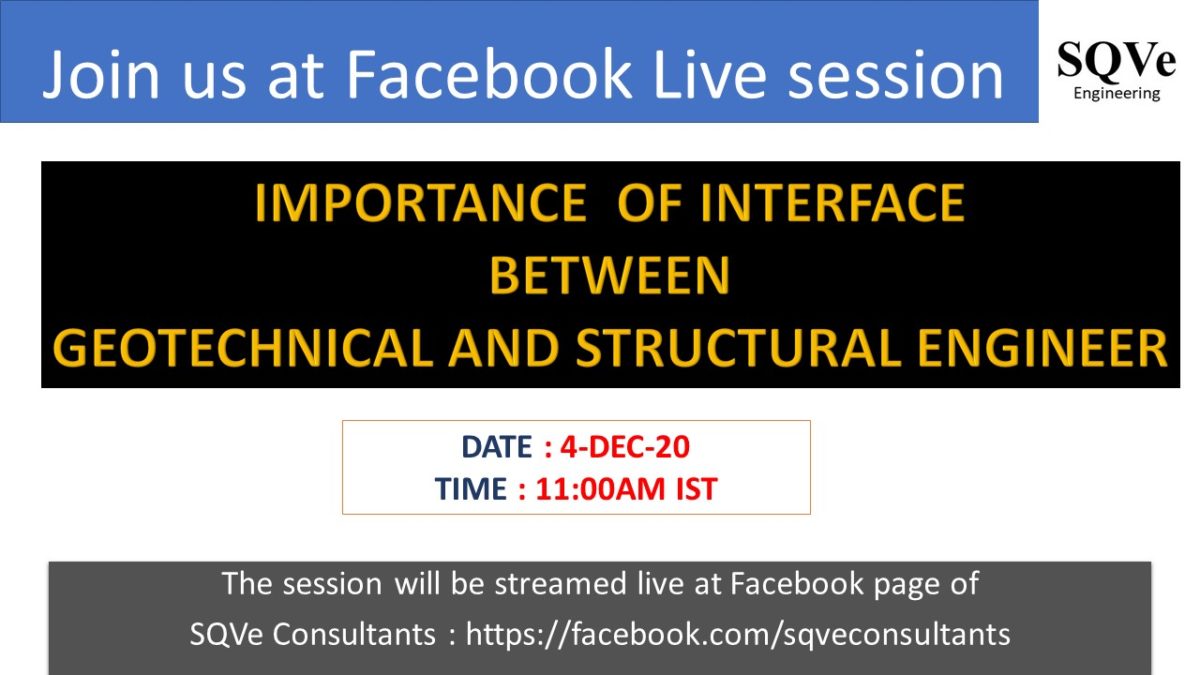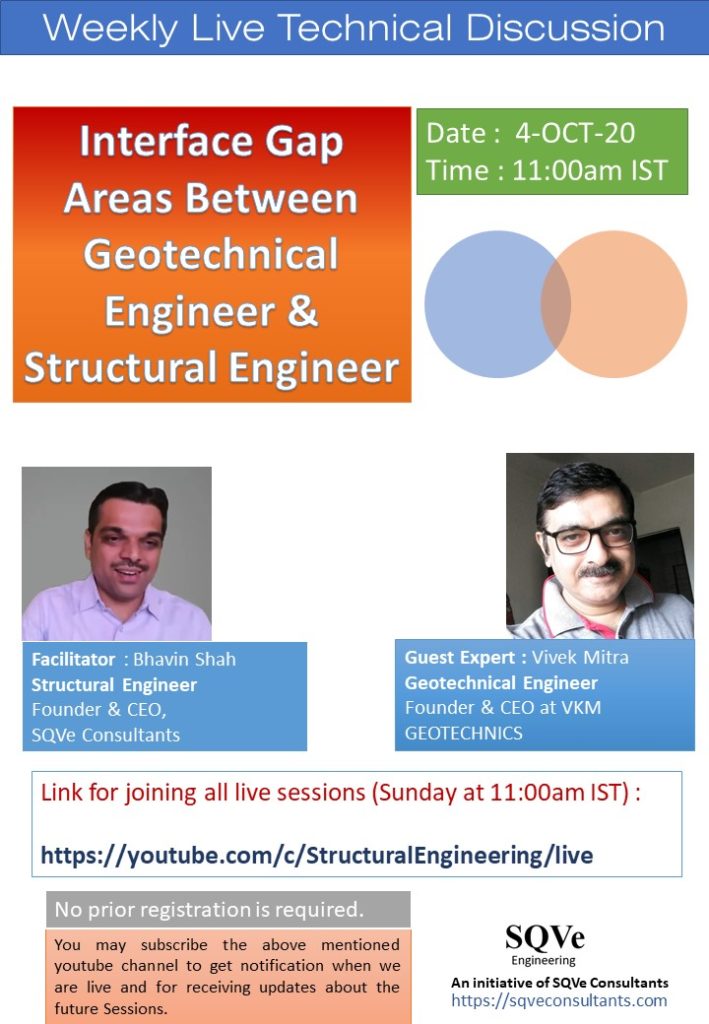We had an interesting conversation on the subject : Importance of interface between Geotechnical & Structural Engineers. Your further comments / queries on the subject are invited.
For safety of the structure and cost optimisation, appropriate geotechnical investigation is extremely important. Apart from definite statistics, it can be said that the geotechnical failures are one of the major causes for collapse of the structures. In the typical fast track projects, sometimes proper interface is not carried out between geotechnical engineer and structural engineer which may affect adversely the major goals of engineering, i.e. safety of the structure and cost optimisation. Also, the project may get delayed substantially due to inappropriate soil investigation or may be due to lack of interface between geotechnical engineer and structural engineer.
VIVEK KUMAR MITRA is a renowned consultant in Geotechnical Engineering. He commenced his career as a GEOTECHNICAL ENGINEER at TATA Consulting Engineers Limited, Mumbai. Later he moved to organization like Bureau Veritas, Reliance, Impac, Egis Consulting Engineers. He was at Abu Dhabi for mega artificial Island Project in 2013 and represented ADNOC. He is geotechnical consultant for projects at Saudi Arabia, Kuwait, and Dubai.He has worked in projects in the areas of Offshore, Infrastructure, Power, Refinery, Petrochemicals & Marine. He also handled with distinction various projects in Ports & Harbors, Mega-Infrastructure, Artificial Islands, Dredging / Land Reclamation and Oil & Gas, Ground Improvement for ultra-soft soil. He is the Founder & CEO of VKM GEOTECHNICS which he started in 2019.
ABOUT THE FACILITATOR
Mr. Bhavin Shah is passionate about Engineering profession with two decades of experience. He is having a dream for enhancing the engineering profession in different organisations. He completed graduation in Civil Engineering and Masters in Structures from Sardar Patel University. He is having unique experience of working in the specialized firm of civil / structural consultancy which grew as multidisciplinary firm (VMS), large multidisciplinary firm (L&T Chiyoda Ltd.) and owner based engineering set up (Adani Infra (I) Ltd.). He worked in different organisations at different levels, starting from junior design engineer to CEO. He is Founder & CEO of SQVe Consultants.
Link for registration and payment for the online course GEO-STR-001 : https://sqveconsultants.com/2020/10/14/online-course-process-of-interactive-geotechnical-investigation/


















